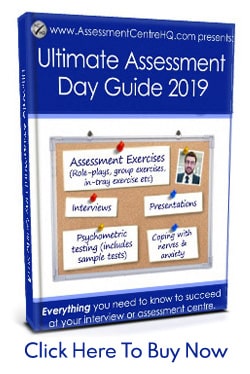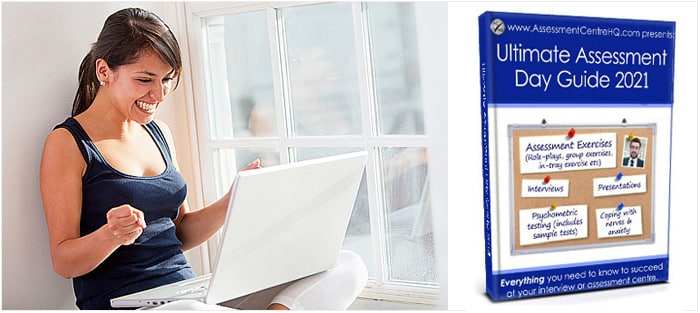Network Rail Assessment Centre & Online Tests – The Ultimate Guide
This Network Rail Ultimate Guide includes practice tests, coaching videos, and dozens of top tips, tricks and insider-secrets for success in the Network Rail Online Assessment and the Network Rail Assessment Centre. Let’s get started!
Table of Contents
A Useful Starting-point Resource
- You can practice the Network Rail aptitude tests here.
Download our Ultimate Assessment Day & Interview Guide 2022 here. (It's packed with tips, tricks and insider-secrets to help you succeed.)
An Overview of Network Rail’s Recruitment Process
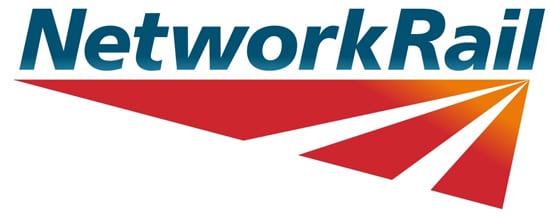
The Network Rail recruitment process is quite long; there are plenty of twists and turns. A good way to visualise the process is to picture it in four “phases.” Let’s take a quick look at each phase before we get into the detail of how to succeed.
Phase 1: Network Rail Online Application
If you haven’t done this yet, you can find some solid hint & tips from Network Rail assessment here.
Phase 2: The Network Rail Online Assessment
This is a fairly standard suite of network rail aptitude tests. (We’ll cover each element of this in detail later in this guide.)
- Situational Judgement Test
- Numerical Reasoning Test
- Verbal Reasoning Tests
- Inductive Reasoning Test (for engineering graduate applicants only)
Phase 3: Network Rail Web-based Interview
This is a pre-recorded interview to further scrutinize your candidacy.
Phase 4: Network Rail Assessment Centre
Lastly, there is the Network Rail Assessment Centre itself. It features the following assessment exercises:
- Group exercise
- Numerical reasoning test
- Verbal reasoning test
- Inductive reasoning test (For engineering graduate scheme only.)
- Network Rail case study & presentation
- Video Interview

Getting Started
After you’ve submitted your online application to start your network rail application process, you will be informed if you have been accepted onto the recruitment ladder. Once you succeeded, your next task is to pass the Network Rail Online Assessment. Your first challenge is the situational judgment test.
The Situational Judgement Test
The Network Rail situational judgment test is the first part of the Network Rail Online Assessment. This is an insightful psychometric test that allows Network Rail Assessment to gauge your intelligence and your judgment and to clearly understand how you set priorities.
In the Network Rail situational judgment test you will need to consider 16 different scenarios and rank three possible responses to each of them.
Unusually for online aptitude tests like this, there is no time limit. Take your time to read each scenario carefully and give a considered answer. You should answer these questions with two things firmly in mind:
- Network Rail’s principles and values.
- The core competencies of your role. (Contact Network Rail’s HR department and get a copy of your job description.)
Network Rail Numerical Reasoning Test
The next two elements in the Network Rail online assessment are the numerical and verbal reasoning tests.
We’ve written extensively about these two forms of aptitude testing elsewhere on this site. In fact, these two guides are the most popular on the site and they will be a treasure trove for you in preparing for this part of the Network Rail graduate process. Check them out:
This network rail numerical reasoning test is a multiple choice test and must be passed before you can complete the verbal reasoning test. As such, it really is vital to nail this one.
You can expect to face 20 numerical questions. You have 20 minutes to complete the test.
Expect to see questions on percentages, ratios, graphs, and data tables.
NOTE: You will take these tests remotely but remember that you will be required to re-sit similar tests at the Network Rail assessment Centre. (This is to prevent candidates from having other people sit their initial tests for them.)

A Very Important Point…
The test supplier used by Network Rail is SHL. This means you should only practice tests from SHL. Of course, nothing will boost your chances of success more than practice. This improves both your competence and your confidence.
We always recommend these Network Rail SHL practice tests because they contain excellent explanations for each question. These allows you to see your strengths and weaknesses and give you the opportunity to improve before the real test. This is transformative for your chances of success.
Check out our free numerical reasoning success guide for much more info and practice tests.
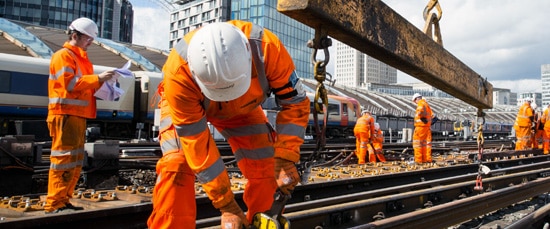
Network Rail Verbal Reasoning Test
Two quick points here:
- The Network Rail verbal test is widely acknowledged as being harder than the numerical one.
- There is less time for the verbal reasoning test, just 15 minutes to complete 30 questions.
You will need to read a series of dense paragraphs and answer questions based on what you have read. This is about being able to read quickly and accurately.
We’ve also written extensively about how to pass verbal reasoning tests here on this site. You should check out our Verbal Reasoning Tests: The Ultimate Guide to learn 7 top tips for verbal reasoning success.
You can also practice the Network Rail SHL verbal tests here. Again, these tests include full answers and explanations.
Are You Applying for the Engineering Tracks Graduate Scheme?
If the answer is yes, you get to complete a further aptitude test before being invited to the Network Rail Assessment Centre. You get to sit an inductive reasoning test, too.
Network Rail Inductive Reasoning Test
This test is going to look at your ability to recognise shapes and patterns and to make decisions based on the patterns you spot.
You will be shown a series of shapes/patterns/objects and will need to decide which one is missing, from the options given to you. The trick here is being able to recognise shapes from different angles. This can be difficult for some people. Don’t worry though, with plenty of practise you will find it easier. Aim to practice for around 45-60 minutes a day for at least one week before the real rest.
Check out our free guide: Inductive Reasoning Tests: 6 Essential Tips for Success to find out more about how to succeed in this form of aptitude testing.
You can practice the Network Rail Inductive Reasoning Test here.
This is the end of the aptitude tests in the Network Rail Online Assessment, but there is still one online task before you can reach the Network Rail Assessment Centre: the web-based interview.
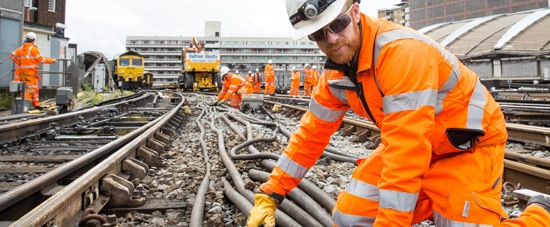
Network Rail Web-Based Interview
Before we get into the specifics of this final interview, it’s important you understand that you are about to fully engage with the company. You must have a good understanding of the company’s history and recent developments. You need to do some research.
This is a huge step, so don’t skip it. Do the work.
Areas you should research:
- Make sure you read up on the company and have an understanding of their history, ethos, and vision.
- Read their annual report.
- Understand what parts of the company are generating the most revenue.
- Where are they growing?
- What’s not working?
- What are their aims for the next 1, 3, 10 years?
You can find Network Rail’s ‘Promise and Principles’ here and their code of business ethics here.
A quick break…
Fancy a break from the heavy detail for a moment? This interesting video from Network Rail features a successful graduate speaking about their experience working for Network Rail.
Okay, let’s get back and track and look at the Network Rail web-based interview.
Network Rail Web-Based Interview
This interview is pre-recorded. You have 7 days to complete the interview, so there really is no excuse for not giving a great performance. Think of this as preparation for your face-to-face interview, at the Network Rail Assessment Centre.
You will be sent a link to Network’s Rail interviewing hub and you will record your answers to the questions that appear on the screen.
This will be a competency-based interview, so prepare yourself by knowing the relevant competencies inside out.
Make sure you know the core competencies of the role you’re applying for. If you don’t, then contact Network Rail’s HR department and request a copy of the full job description. It will contain the core competencies of the role. This is basically a checklist of exactly what Network Rail is looking for in successful candidates.
This document should be your working bible, your ultimate reference point, and compass that will guide you through the rest of the Network Rail recruitment process.
ACTION POINT: Prepare examples from your past experience when you have demonstrated each of the competencies. This will be the basis of your interview answers. Don’t skip this important point. Competency-based interviews are art and many fabulous candidates fail to get their preferred job because they don’t understand how to ‘play the game’ of competency-based interviews.
Use the STAR method in Competency-based Interviews
When giving your answers, a great framework to use is the STAR method:
STAR stands for Situation, Task, Action, Result.
- Situation – Paint a background picture of the challenge/problem. (EG, “Our department’s sales figures were down 5% year on year”.)
- Task – Describe why it was a big problem. (EG, “We were in danger of missing our annual target.”)
- Action – The Great Thing you did. (EG, “I won two new clients and boosted my team’s sales by 8%”.)
- Result – The impact of your Great Thing. (EG, “We finished the year 2% ahead of our sales target.”)
This is a brilliant way of framing your answers for maximum impact. It takes practice though, so run through your example answers again and again. Say them aloud. Sub-vocalising them in your head doesn’t work as well.
For in-depth interview advice check out our Interview Masterclass.

Network Rail Assessment Centre
So you passed your web-based interview? What’s next? Finally, you will receive your invitation to the Network Rail Assessment Centre.
Where Is the Network Rail Assessment Centre and What Should I Expect?
The Network Rail Assessment Centre is in Milton Keynes and is held at the modern HQ of Network Rail.
Some Quick Tips
- Make sure you prepare in advance. Take all your documentation to the Network Rail Assessment Centre, such as your ID and updated CV.
- Use our article What to Expect at Your Assessment Centre for an introduction to assessment centres in general.
- We’re going to insist that you read our guide: How To Prepare For An Assessment Centre – you’ll find TONS of useful nuggets of info and proven tips here.
- Be sure to also check out the Network Rail’s Graduate Scheme Facebook Page. It’s packed with hints and tips from people that have successfully completed the Network Rail Assessment Centre.
What Are the Exercises at the Network Rail Assessment cCntre?
The nature of the Network Rail Assessment Centre is pretty standard:
- Group Exercise
- Verification of previously completed online aptitude tests
- Case Study & Presentation
- One-on-one Interview
Let’s look at each part of the Network Rail Assessment Centre in more detail.

The Group Exercise
The first element of the Network Rail Assessment Centre is your group exercise. You are going to be assessed on your ability to work as part of a team.
How well do you use your initiative? Are you a leader? Are you a pushover? Are you polite? Abrasive?
Group exercises can be very tricky. You must find the right balance. You don’t want to appear as a weak member of the group, nor do you want to seem like an overbearing bully.
We’ve written about group exercises at length. For much more advice on this, you should read our free guide: How To Shine In Assessment Centre Group Exercises
The type of group exercise that you face at your Network Rail Assessment Centre depends on the role that you are applying for:
For Engineering Candidates – You will have to work as part of a team to build a structure from pipes and materials of several colours. You must build a set of rules and follow the instructions provided. Your teamwork skills and your technical ability will both be assessed.
For Non-Engineering Candidates – There are two possible exercises you could face:
- You and your team have been stranded on a desert island – 70 miles from safety. You will be given 30 minutes to decide from a given list of items, what is essential and what isn’t, in order to reach the safe area.
- You will be given a presentation, in regards to a current Network Rail project. You will then need to discuss as a group, the pros and cons of the project overall. Make sure you prepare, just in case you get this version of the group exercise. This task needs you to look at the core values and beliefs of Network Rail. (Put your ideas forward with these in mind, openly reference them, and you can be sure you will stand out.)
Whatever group exercise you face at your Network Rail Assessment Centre, expect to be in a group of 8-10 candidates, with 5 assessors watching over you and taking notes.
Quick Tips
- Include everyone. Be the person that brings quieter group members into the fold.
- Offer to be the timekeeper. Subtly and non-aggressively this makes you a central player in the discussion.
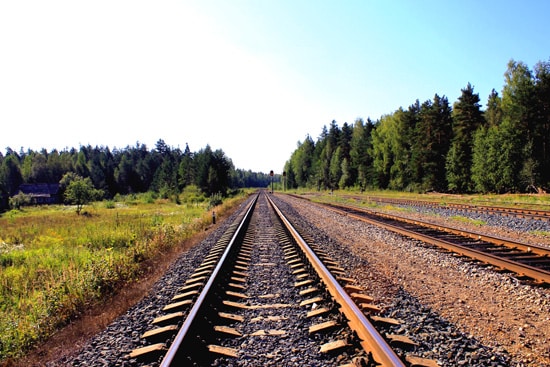
Verification of Your Aptitude Tests
In the next part of your Network Rail Assessment Centre, you will have to complete a numerical and verbal reasoning test (and for some, an inductive reasoning test). These are very similar to the ones you completed earlier on in the network rail application process.
Here are the links to our free success guides for each element again:
- Numerical Reasoning Test – Success Guide
- Verbal Reasoning Test – Success Guide
- Inductive Reasoning Tests – Success Guide
You can practice the Network Rail tests here (includes full answers and explanations for each question).
Network Rail Assessment Centre Case Study and Presentation
The part of the Network Rail Assessment Centre has a lot of candidates worrying. The case study and presentation are the bits that most people really dread. Don’t worry. Let’s look at some practical tips.
For this assessment, you have to provide a cost-benefit analysis of two possible future projects.
- The information on both projects will be provided in a pack and you will have 30 minutes to review the information.
- Your analysis should help Network Rail decide which of the projects that they should proceed with, as they can only fund one of them.
- Once you have finished your analysis and decided which project Network Rail should pursue, you will be given up to 30 minutes to prepare your presentation. It must be 15 minutes long and you will need to use a flip chart as a visual aid.
- You will be expected to explain why you came to your decision and why you did not choose the other project.
- Once your presentation is over, you can expect to spend 10 minutes answering questions about your decision and your presentation.
You should read our free guide: How To Deliver A World-Class Assessment Centre Presentation
Check out this video that has the top 5 tips on giving a great presentation. This can help you with your applciation.
The Network Rail Assessment Centre – One to One Interview
This is the last part of the Network Rail Assessment Centre.
What Should I expect?
The interview will be an hour long and you will be tested on certain capabilities:
- Influence
- Drive
- Overcoming obstacles
- Searching for information
Can you show your interviewer that you have demonstrated these qualities?
You will be asked to provide examples from your previous experiences as to when you have demonstrated these qualities. (Remember we spoke about the STAR method above? This is where that framework comes into its own and separates you from the rest of the pack.)
You will also be questioned on your specific role. Make sure you know the job description and competencies inside out. Describe times in your life when you have used these skills and remember to do so with a smile. Everyone wants to work with positive and friendly people.
- There’s an entire section of this site that’s committed to interviewing success, have a look around: Interview Masterclass
- Does the thought of an interview fill you with dread? Read our article on How To Cope With Anxiety About Your Interview.
Ok, we’ve reached the end of our prep for the Network Rail Assessment Centre. Here are a couple of final resources we’d like to share with you:
Two useful videos for interview success
Here’s a short video that has some great do’s and don’ts:
And this video covering the importance of your body language is also useful:
Final resources
A few final handy links:
- Visit the Network Rail FAQ Page, if you are looking for something that has not been covered here.
- You can practice the Network Rail verbal & numerical tests here (includes full answers and explanations for each question).
- Check out this forum for questions and advice posted by other candidates and attendees from the Network Rail assessment test.
Best of Luck
We hope you enjoyed this free Network Rail Assessment Centre Guide. Good luck with the rest of your career. We wish you success with your Network Rail online tests and at your Network Rail Assessment Centre.
Turbocharge your employability NOW
Get your copy of our Ultimate Assessment Day & Interview Guide here. It's packed with tips, tricks and insider-secrets to help you succeed.
.
© Copyright AssessmentCentreHQ - All Rights Reserved
.
FAQs
1. What is the Network Rail Online Assessment?
The Network Rail Online Assessment is a computer-based test that measures your ability to understand and respond to railway safety scenarios. It is used to determine whether you are fit to work on the railway network.
2. What do you wear to a Network Rail interview?
There is no set dress code for Network Rail interviews, but it is generally advisable to dress smartly. For men, this might mean a suit or a smart shirt and trousers; for women, a skirt or trousers with a blouse or shirt.
3. Where is Network Rail Assessment Centre?
The Network Rail Assessment Centre is located in Milton Keynes, England. All applicants who have passed the first three rounds of the recruitment process, including those applying for apprenticeships and graduate schemes, must spend the entire day at the Network Rail assessment center.
4. What are your reasons for wanting to work for Network Rail?
There are many reasons to work in the rail industry. Some of the top reasons include:
1. Rail is a growing industry with many opportunities for career growth.
2. Rail is a safe industry with a low injury rate.
3. Rail offers good pay and benefits.
4. Rail is a stable industry with job security.
5. Rail is an exciting industry with many opportunities for travel.
5. Is Network Rail a good company to work for?
There are a lot of different opinions on whether or not Network Rail is a good company to work for. Some people love the company and its benefits, while others find the company to be unorganized and difficult to work for. Overall, it really depends on the individual and their experiences working at Network Rail.
Read also:
- Train Driver Test – Tips to Ace the Psychometric Sections and Assessments
- What Are The Type Of Questions Asked In The National Testing Network Test?
Sarah is an accomplished educator, researcher and author in the field of testing and assessment. She has worked with various educational institutions and organisations to develop innovative evaluation methods and enhance student learning. Sarah has published numerous articles and books on assessment and learning. Her passion for promoting equity and fairness in the education system fuels her commitment to sharing insights and best practices with educators and policymakers around the world.



